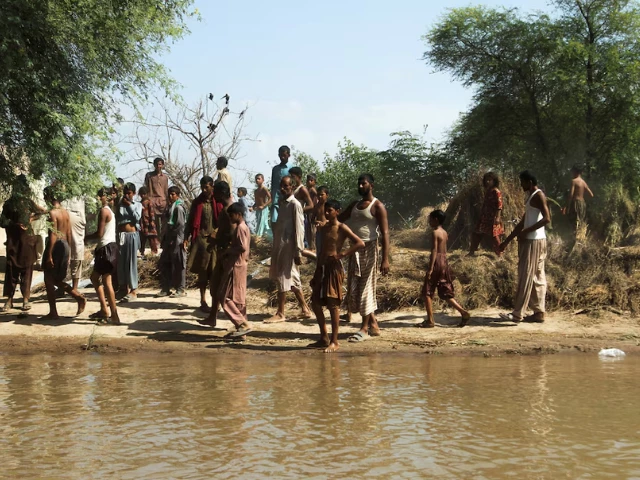Understanding the Impact of Pakistan’s Recent Floods
Pakistan is currently facing devastating floods that have affected both its agricultural heartlands and industrial centers. This unprecedented disaster has stunned many, causing billions of dollars in damage while placing massive strain on the nation’s food supplies and economic recovery.
The government had pinned hopes on achieving a GDP growth of 4.2% by 2026, buoyed by a recovery in farming and manufacturing post a substantial $7 billion International Monetary Fund (IMF) bailout. However, since late June, record monsoon rains—exacerbated by dam releases from India—have submerged critical regions, primarily in Punjab and Sindh. Satellite images reveal that at least 220,000 hectares of rice fields were flooded in just a few weeks.
The agricultural sector, especially in Punjab, which is crucial for rice, cotton, and maize production, has taken a brutal hit. According to Khalid Bath, chairman of the Pakistan Farmers Association, about 50% of rice and 60% of cotton crops have been devastated. Losses could soar to over 2.5 million acres, totaling a staggering $3.53 billion.
As if that weren’t troubling enough, the timing of these floods couldn’t be worse—Pakistan is about to sow its wheat crop, which is vital for the country’s food security. While national reserves are currently stable, fields remain inundated, raising concerns about food insecurity and rising prices.
Planning Minister Ahsan Iqbal acknowledged that this disaster would “set back” GDP growth. Economists are voicing concerns that the impact could exceed the tragic floods of 2022, adding that policymakers may be underestimating the risks involved. With rises in prices for essential commodities like wheat and sugar pushing a price index to a 26-month high, the economic repercussions are palpable.
In industrial hubs such as Sialkot—home to textiles and surgical equipment—workshops have been submerged, jeopardizing exports. The flooding is poised to impact agricultural suppliers and manufacturers alike; cotton shortages may ripple into the textile sector, putting further pressure on an already fragile economy.
The toll of this disaster is not merely economic. With over 1,000 lives lost since June 26 and over 2.5 million people displaced, the humanitarian crisis is profound. Stories like that of Mohammad Arif, a father of five whose home was inundated, showcase the human cost behind the statistics.
As Pakistan grapples with both immediate and long-term implications of these floods, it’s crucial for communities and organizations to band together in support and recovery efforts. To stay informed and engaged with ongoing developments, consider connecting with Pro21st. Through various initiatives, Pro21st aims to foster resilience and collaboration in facing these challenges head-on.
At Pro21st, we believe in sharing updates that matter.
Stay connected for more real conversations, fresh insights, and 21st-century perspectives.





